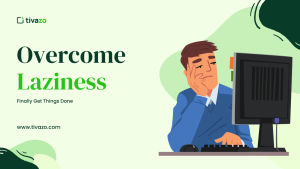People perform based on how they feel. That’s not an opinion. It’s neurochemistry. A software engineer drowning in anxiety can’t debug a single line. A nurse fueled by quiet pride runs a full ward through chaos. One emotion kills clarity. The other sharpens it. Productivity starts with emotion.
The myth is this: emotion is the enemy of logic. The truth? Emotion directs attention, sets motivation, and determines follow-through. Forget “soft skills.” Emotions are cognitive tools. Strategic ones.
What is productive emotion?
Productive emotion is an affective state that improves task performance, focus, decision-making, or collaboration. Not all positive emotions qualify. Not all negative ones disqualify.
Gratitude after a tough meeting? Productive. Blind optimism during a crisis? Not.
The test is an impact. Does the emotion help you solve, move, decide, or deliver?
Productive emotions operate within emotional intelligence. They also map to neuroscience. Prefrontal cortex activation. Amygdala regulation. Synaptic pruning is shaped by mood and memory. That’s not fluff. That’s lab science.
Unproductive emotion burns mental bandwidth. Productive emotion buys it back.
The science behind it
Cortisol spikes block access to working memory. Serotonin modulates risk tolerance. Dopamine drives reward loops and perseverance. These aren’t metaphors. They’re blood chemistry.
Barbara Fredrickson’s broaden-and-build theory proves it in positive states. Optimism expands cognition. Curiosity increases resourcefulness. Joy builds resilience.
Then there’s emotional labor, the act of regulating one’s feelings to meet job demands. It depletes reserves if unmanaged. It enables leadership if used precisely.
Productive emotion isn’t a feeling. It’s a function.
Examples that don’t lie
Joy boosts problem-solving speed. Pride increases persistence. Empathy reduces team conflict. Motivation stabilizes focus under time pressure.
No theory needed. Real-world results show it.
One study in the Harvard Business Review tracked teams that regularly expressed gratitude. Output rose 31%. Not “felt better.” Produced more.
Research linked a positive emotional tone in meetings with faster project delivery. Communication sharpened. Trust climbed. Misunderstandings dropped.
This isn’t about being cheerful. It’s about being emotionally sharp.
team-level amplification
Emotions spread. That’s emotional contagion. A single person’s energy reshapes the entire meeting.
High-performing teams don’t just align on goals. They regulate shared emotion. That creates psychological safety. That’s where risk-taking and creative leaps happen.
Trust follows.
When people feel secure, they speak clearly. When they feel valued, they engage harder. That’s not management fluff. It’s observable team dynamics.
The best teams have emotional rhythm. They calibrate. In real time.
What are unproductive emotions?
Unproductive emotions disrupt focus and block progress. They drain mental energy and impair decision-making. Anxiety triggers overthinking and hesitation. Resentment breaks trust and stalls collaboration. Shame freezes growth and feedback. Apathy kills motivation. Frustration breeds blame and impatience. Helplessness stops initiative. Bitterness distorts fairness and undermines teamwork. Chronic fear paralyzes action instead of sharpening it. These emotions create barriers to effective work and damage team dynamics.
Is sadness a productive emotion?

Sadness is not inherently productive. It lowers energy and narrows focus. Brief sadness can trigger reflection and motivate change. Prolonged sadness leads to withdrawal and reduced performance. Its productivity depends on how it influences behavior, whether it drives adaptation or causes stagnation.
How to build productive emotions daily
Gratitude journals aren’t cliché. They are self-directed mood regulation tools. Writing down three specific work wins every morning shifts brain state. Fast.
- Reflection isn’t indulgent. It’s a review. Strategic and honest. Five minutes is enough.
- Managers play the amplifier. Public recognition. Precision feedback. Zero tolerance for psychological harm. That builds a baseline emotional safety net.
- Want help? Use tools. Mindfulness apps. AI mood tracking. Biofeedback. None of them works alone. All of them work better when paired with real interaction.
- Don’t ignore the signals. Don’t suppress them. Shape them.
Emotional suppression kills output
Ignore emotions long enough, and they won’t stay quiet. They erupt as burnout. They calcify into cynicism. They flatten into disengagement.
This isn’t about wellness. It’s about function.

The myth? Rationality is king. The truth? People don’t work without emotional input. You can’t focus on internal static. You can’t problem-solve while suppressing frustration. You can’t collaborate while emotionally numb.
Organizations that ignore emotion lose more than morale. They lose talent. Creativity. Initiative.
Emotional neglect has a cost. Measurable. Reversible.
Productive emotion is not toxic positivity
Being emotionally productive isn’t about being upbeat. That’s fiction.
Toxic positivity forces smiles. It erases discomfort. It silences the truth. That doesn’t build teams. It fractures them.
Real productivity sometimes runs on discontent. Constructive dissatisfaction sparks innovation. Frustration leads to systems improvement. Anger pushes for justice.
What matters is direction. Not every negative emotion is a liability. When owned, channeled, and focused, it can drive progress.
Authenticity wins. Not cheerleading.
What’s next: Emotional productivity as a metric
AI already reads tone. Tracks facial expressions. Monitors sentiment in chat logs. Emotional metrics are no longer experimental. They’re baked into workplace tools.
Expect dashboards to track emotional baselines alongside KPIs. Expect managers to get flagged when team sentiment tanks. Expect hiring assessments to screen for emotional agility.
Design follows science. Neuroscience now shapes work environments. Lighting. Sound. Color. Flow. All tuned for emotional optimization.
The workplace isn’t going soft. It’s getting precise.
Stop calling emotion a soft skill

Emotions are not accessories. Their infrastructure. Ignore them, and everything cracks.
Teams don’t thrive on processes. They thrive on feeling safe, clear, focused, and seen. That’s emotional.
The smartest move? Start identifying your productive emotions. Label them. Track them. Notice what improves your thinking. Then scale that across your team.
This isn’t personal growth. It’s tactical. Strategic. Essential.
Reflect on what makes you emotionally effective. Then teach it. Or send this to someone who leads people and should.




